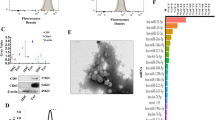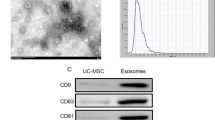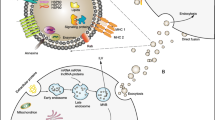Abstract
Spinal cord injury (SCI) often leads to personal and social-economic consequences with limited therapeutic options. Exosomes derived from human umbilical cord mesenchymal stem cells (hUC-MSC) have been explored as a promising alternative to cell therapies. In the current study, we explored the mechanism of hUC-MSC derived exosome's ameliorative effect on the spinal cord injury by combining data from in vivo contusion SCI model and in vitro cell viability of PC12 cell line stimulated with lipopolysaccharide. Intravenous administration of hUC-MSC derived exosomes dramatically improved motor function of Sprague–Dawley rats after SCI, with reduced apoptosis demonstrated by increased expression of B-cell lymphoma 2 (BCL2), decreased BCL2 associated X, apoptosis regulator (Bax), and reduced cleaved caspase 9. Conversely, exosome treatment reduced the transcription levels of astrocytes marker GFAP and microglia marker IBA1, suggesting a reduced inflammatory state from SCI injury. Furthermore, exosome treatment in vitro increased the cell viability of PC12 cells. Exosome application activated the Wnt/β-Catenin signaling in the spinal cord. Our study demonstrated that hUC-MSC derived exosomes could improve motor function through anti-apoptosis and anti-inflammatory effects. BCL2/Bax and Wnt/β-catenin signaling pathways were involved in the SCI process and could potentially mediate the protective effect of hUC-MSC derived exosomes.






Similar content being viewed by others
Data Availability
Data will be made available upon reasonable request to the corresponding author.
References
Alam A, Thelin EP, Tajsic T, Khan DZ, Khellaf A, Patani R, Helmy A (2020) Cellular infiltration in traumatic brain injury. J Neuroinflamm 17:328
Ye JT, Li FT, Huang SL, Xue JL, Aihaiti Y, Wu H, Liu RX, Cheng B (2019) Effects of ginsenoside Rb1 on spinal cord ischemia-reperfusion injury in rats. J Orthop Surg Res 14:259
Anwar MA, Al Shehabi TS, Eid AH (2016) Inflammogenesis of secondary spinal cord injury. Front Cell Neurosci 10:98
Chen Y, Tang Y, Allen V, DeVivo MJ (2015) Aging and spinal cord injury: external causes of injury and implications for prevention. Top Spinal Cord Inj Rehabil 21:218–226
Yamazaki K, Kawabori M, Seki T, Houkin K (2020) Clinical trials of stem cell treatment for spinal cord injury. Int J Mol Sci 21:3394
Kim DW, Staples M, Shinozuka K, Pantcheva P, Kang SD, Borlongan CV (2013) Wharton’s jelly-derived mesenchymal stem cells: phenotypic characterization and optimizing their therapeutic potential for clinical applications. Int J Mol Sci 14:11692–11712
Ullah I, Subbarao RB, Rho GJ (2015) Human mesenchymal stem cells—current trends and future prospective. Biosci Rep 35:e00191
Kyurkchiev D, Bochev I, Ivanova-Todorova E, Mourdjeva M, Oreshkova T, Belemezova K, Kyurkchiev S (2014) Secretion of immunoregulatory cytokines by mesenchymal stem cells. World J Stem Cells 6:552–570
Gao L, Peng Y, Xu W, He P, Li T, Lu X, Chen G (2020) Progress in stem cell therapy for spinal cord injury. Stem Cells Int 2020:2853650
Xie Q, Liu R, Jiang J, Peng J, Yang C, Zhang W, Wang S, Song J (2020) What is the impact of human umbilical cord mesenchymal stem cell transplantation on clinical treatment? Stem Cell Res Ther 11:519
Saeedi P, Halabian R, Imani Fooladi AA (2019) A revealing review of mesenchymal stem cells therapy, clinical perspectives and Modification strategies. Stem Cell Investig 6:34
de Witte SFH, Luk F, Sierra Parraga JM, Gargesha M, Merino A, Korevaar SS, Shankar AS, O’Flynn L, Elliman SJ, Roy D, Betjes MGH, Newsome PN, Baan CC, Hoogduijn MJ (2018) Immunomodulation by therapeutic mesenchymal stromal cells (MSC) is triggered through phagocytosis of MSC by monocytic cells. Stem Cells 36:602–615
Saat TC, van den Engel S, Bijman-Lachger W, Korevaar SS, Hoogduijn MJ, IJzermans JN, de Bruin RW (2016) Fate and effect of intravenously infused mesenchymal stem cells in a mouse model of hepatic ischemia reperfusion injury and resection. Stem Cells Int 2016:5761487
Zhang Y, Liu Y, Liu H, Tang WH (2019) Exosomes: biogenesis, biologic function and clinical potential. Cell Biosci 9:19
Rashed MH, Bayraktar E, Helal GK, Abd-Ellah MF, Amero P, Chavez-Reyes A, Rodriguez-Aguayo C (2017) Exosomes: from garbage bins to promising therapeutic targets. Int J Mol Sci 18:538
Yu B, Shao H, Su C, Jiang Y, Chen X, Bai L, Zhang Y, Li Q, Zhang X, Li X (2016) Exosomes derived from MSCs ameliorate retinal laser injury partially by inhibition of MCP-1. Sci Rep 6:34562
Fahmy SR, Soliman AM, El Ansary M, Elhamid SA, Mohsen H (2017) Therapeutic efficacy of human umbilical cord mesenchymal stem cells transplantation against renal ischemia/reperfusion injury in rats. Tissue Cell 49:369–375
da Silva-Junior AJ, Mesentier-Louro LA, Nascimento-Dos-Santos G, Teixeira-Pinheiro LC, Vasques JF, Chimeli-Ormonde L, Bodart-Santos V, de Carvalho LRP, Santiago MF, Mendez-Otero R (2021) Human mesenchymal stem cell therapy promotes retinal ganglion cell survival and target reconnection after optic nerve crush in adult rats. Stem Cell Res Ther 12:69
Han C, Sun X, Liu L, Jiang H, Shen Y, Xu X, Li J, Zhang G, Huang J, Lin Z, Xiong N, Wang T (2016) Exosomes and their therapeutic potentials of stem cells. Stem Cells Int 2016:7653489
Rivlin AS, Tator CH (1977) Objective clinical assessment of motor function after experimental spinal cord injury in the rat. J Neurosurg 47:577–581
Qiao C, Xu W, Zhu W, Hu J, Qian H, Yin Q, Jiang R, Yan Y, Mao F, Yang H, Wang X, Chen Y (2008) Human mesenchymal stem cells isolated from the umbilical cord. Cell Biol Int 32:8–15
Guo C, Cho KS, Li Y, Tchedre K, Antolik C, Ma J, Chew J, Utheim TP, Huang XA, Yu H, Malik MTA, Anzak N, Chen DF (2018) IGFBPL1 regulates axon growth through IGF-1-mediated signaling cascades. Sci Rep 8:2054
Liu W, Wang Y, Gong F, Rong Y, Luo Y, Tang P, Zhou Z, Zhou Z, Xu T, Jiang T, Yang S, Yin G, Chen J, Fan J, Cai W (2019) Exosomes derived from bone mesenchymal stem cells repair traumatic spinal cord injury by suppressing the activation of A1 neurotoxic reactive astrocytes. J Neurotrauma 36:469–484
Banizs AB, Huang T, Dryden K, Berr SS, Stone JR, Nakamoto RK, Shi W, He J (2014) In vitro evaluation of endothelial exosomes as carriers for small interfering ribonucleic acid delivery. Int J Nanomed 9:4223–4230
Wang Y, Lai X, Wu D, Liu B, Wang N, Rong L (2021) Umbilical mesenchymal stem cell-derived exosomes facilitate spinal cord functional recovery through the miR-199a-3p/145-5p-mediated NGF/TrkA signaling pathway in rats. Stem Cell Res Ther 12:117
Oyinbo CA (2011) Secondary injury mechanisms in traumatic spinal cord injury: a nugget of this multiply cascade. Acta Neurobiol Exp 71:281–299
Yang Y, Pang M, Chen YY, Zhang LM, Liu H, Tan J, Liu B, Rong LM (2020) Human umbilical cord mesenchymal stem cells to treat spinal cord injury in the early chronic phase: study protocol for a prospective, multicenter, randomized, placebo-controlled, single-blinded clinical trial. Neural Regen Res 15:1532–1538
Choumerianou DM, Dimitriou H, Kalmanti M (2008) Stem cells: promises versus limitations. Tissue Eng Part B 14:53–60
Zhou J, Benito-Martin A, Mighty J, Chang L, Ghoroghi S, Wu H, Wong M, Guariglia S, Baranov P, Young M, Gharbaran R, Emerson M, Mark MT, Molina H, Canto-Soler MV, Selgas HP, Redenti S (2018) Retinal progenitor cells release extracellular vesicles containing developmental transcription factors, microRNA and membrane proteins. Sci Rep 8:2823
Xu J, Feng Z, Wang X, Xiong Y, Wang L, Ye L, Zhang H (2019) hUC-MSCs exert a neuroprotective effect via anti-apoptotic mechanisms in a neonatal HIE rat model. Cell Transplant 28:1552–1559
Edlich F (2018) BCL-2 proteins and apoptosis: recent insights and unknowns. Biochem Biophys Res Commun 500:26–34
Li G, Jia Z, Cao Y, Wang Y, Li H, Zhang Z, Bi J, Lv G, Fan Z (2015) Mitochondrial division inhibitor 1 ameliorates mitochondrial injury, apoptosis, and motor dysfunction after acute spinal cord injury in rats. Neurochem Res 40:1379–1392
Zong WX, Li C, Hatzivassiliou G, Lindsten T, Yu QC, Yuan J, Thompson CB (2003) Bax and Bak can localize to the endoplasmic reticulum to initiate apoptosis. J Cell Biol 162:59–69
Steinhart Z, Angers S (2018) Wnt signaling in development and tissue homeostasis. Development 145:dev146589
Cuzzocrea S, Genovese T, Mazzon E, Crisafulli C, Di Paola R, Muia C, Collin M, Esposito E, Bramanti P, Thiemermann C (2006) Glycogen synthase kinase-3 beta inhibition reduces secondary damage in experimental spinal cord trauma. J Pharmacol Exp Ther 318:79–89
Yin ZS, Zu B, Chang J, Zhang H (2008) Repair effect of Wnt3a protein on the contused adult rat spinal cord. Neurol Res 30:480–486
Yuan S, Shi Y, Tang SJ (2012) Wnt signaling in the pathogenesis of multiple sclerosis-associated chronic pain. J Neuroimmune Pharmacol 7:904–913
Ding M, Shen Y, Wang P, Xie Z, Xu S, Zhu Z, Wang Y, Lyu Y, Wang D, Xu L, Bi J, Yang H (2018) Exosomes isolated from human umbilical cord mesenchymal stem cells alleviate neuroinflammation and reduce amyloid-beta deposition by modulating microglial activation in Alzheimer’s disease. Neurochem Res 43:2165–2177
Hu SL, Luo HS, Li JT, Xia YZ, Li L, Zhang LJ, Meng H, Cui GY, Chen Z, Wu N, Lin JK, Zhu G, Feng H (2010) Functional recovery in acute traumatic spinal cord injury after transplantation of human umbilical cord mesenchymal stem cells. Crit Care Med 38:2181–2189
Acknowledgements
None.
Funding
The authors have no financial interests to disclose in relation to this paper.
Author information
Authors and Affiliations
Corresponding author
Ethics declarations
Conflict of interest
All the authors declare that they have no competing interest.
Additional information
Publisher's Note
Springer Nature remains neutral with regard to jurisdictional claims in published maps and institutional affiliations.
Rights and permissions
About this article
Cite this article
Kang, J., Guo, Y. Human Umbilical Cord Mesenchymal Stem Cells Derived Exosomes Promote Neurological Function Recovery in a Rat Spinal Cord Injury Model. Neurochem Res 47, 1532–1540 (2022). https://doi.org/10.1007/s11064-022-03545-9
Received:
Revised:
Accepted:
Published:
Issue Date:
DOI: https://doi.org/10.1007/s11064-022-03545-9




